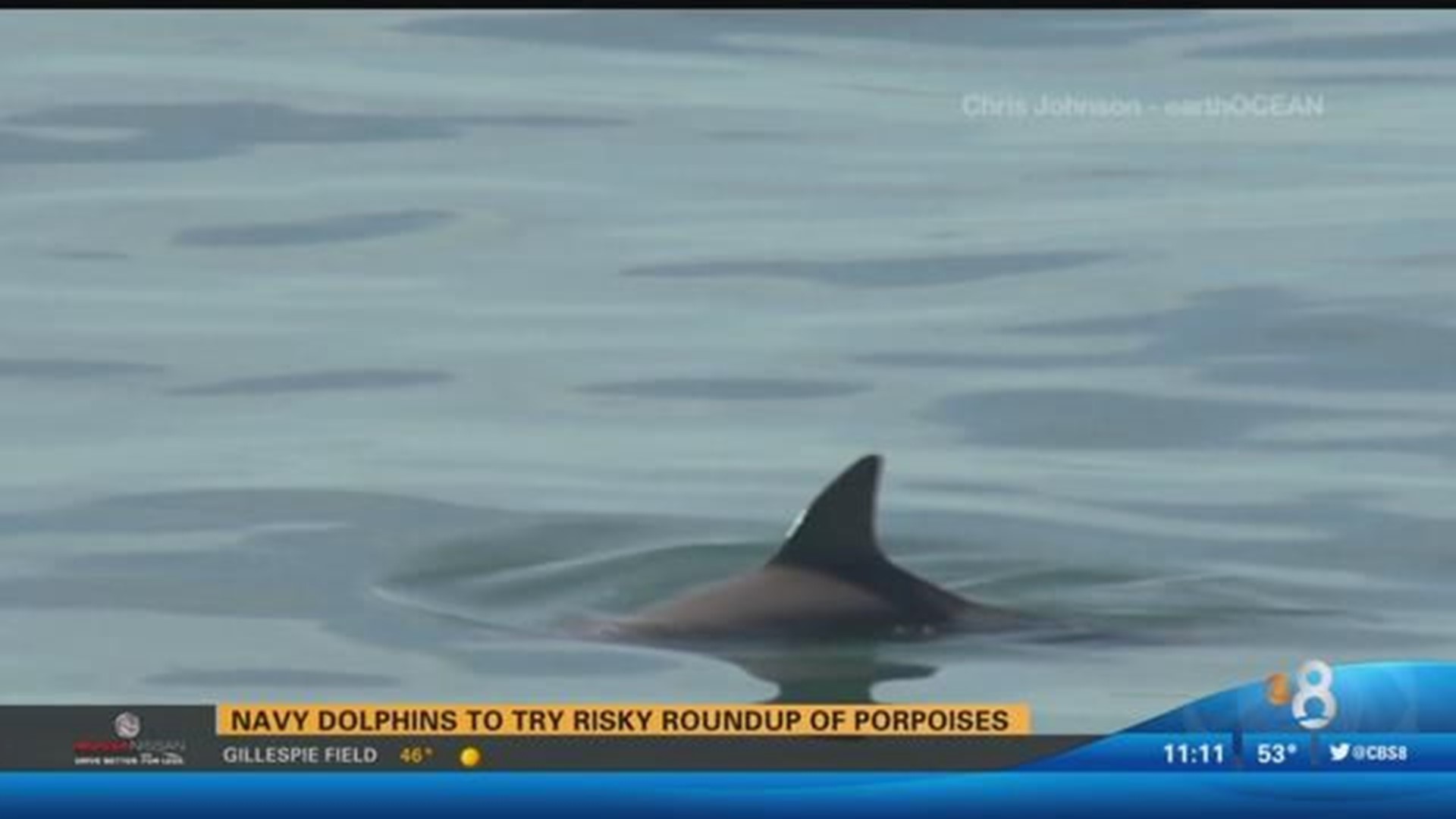SAN DIEGO (CBS 8) - U.S. Navy dolphins trained in San Diego may soon be flown to Mexico to round up and capture endangered vaquita porpoises.
The plan is described as a rescue operation in the Sea of Cortez but animal advocates are calling it a risky roundup.
Vaquita porpoises are the most endangered marine mammal on the plant, according to a recent survey in the northern Sea of Cortez, the only place where vaquita can be found.
“Based on the data we think there are only about 30 vaquita remaining,” said Barbara Taylor, a NOAA marine biologist based in La Jolla.
Illegal gillnet fishing in the Sea of Cortez is killing off vaquitas at an alarming rate.
“We have had a two year ban on all gillnets in the area with the fisherman being paid not to fish and we are still seeing this decline going on,” said Taylor, who participated in the most recent vaquita survey in the summer of 2016.
Poachers use gillnets to catch totoaba, an endangered fish sold for its swim bladder on the Chinese black market.
“The draw of the swim bladder is that it is used to make your skin look more youthful in soups. So, it's actually cut up and used in soups,” Taylor said.
Marine biologists at NOAA’s Southwest Fisheries Science Center in La Jolla and an international team of scientists are working on a plan to save the vaquita from extinction.
“We have to find them. We have to get a net around an animal that avoids boats. So, it’s going to be a very tall order to be able to capture them,” according to Taylor.
The plan involves using lightweight nets to capture up to 10 of the 30 remaining vaquita and hopefully establish a captive-breeding program near San Felipe.
“They are using some very specialized nets brought from the Netherlands. When the animals hit the nets they can actually come up to the surface and breathe,” Taylor said.
There are only six existing species of porpoise. Some have been held in captivity but others can stress out and die during a capture attempt.
“We don’t know what vaquita are going to be like and we won’t know until we try. If one stressed out and died during the capture process – which of course would be a horrible outcome – we would absolutely stop the entire process,” said Taylor. “There is an independent review panel that is set up to deal with a contingency like this.”
“It’s going to be difficult and we're just going to have to get out there and learn by experience. We’ll just have to figure out the best we can how to manage to get a net around this species that’s quite elusive,” Taylor added.
The plan is risky because no vaquita porpoise has ever been captured or held in pens; and controversial because U.S. Navy dolphins from San Diego will be flown to Mexico to round up vaquita in the wild.
The 80 or so Navy bottlenose dolphins kept in sea pens in San Diego bay for decades have been trained to use echolocation to find underwater mines.
Currently, the Navy is training its dolphins to use that same natural sonar to locate the endangered vaquita porpoises.
“To me it looks a little like a publicity stunt for the Navy,” said Jane Cartmill of the nonprofit San Diego Animal Advocates.
Cartmill said the Navy has been struggling to find a reason to keep its marine mammal program funded since the development of underwater robots, which may one day replace Navy dolphins.
“This is a cause celebre for (the Navy). This gives good justification to keep the marine mammal program going,” said Cartmill.
She said the vaquita rescue plan may not work because porpoises, as opposed to bottlenose dolphins, do not do well in captivity.
“You're putting these individual animals through a very stressful situation at best, being hunted, captured and confined. Even if they survive, they probably won't survive for long,” said Cartmill.
If the breeding effort does prove successful, Cartmill said there still is no safe place to release vaquita back into the wild because illegal gillnetting continues.
“There is a concern that (the vaquita) could wind up in some sort of captive display where tourists or others are coming in and paying to see them,” Cartmill said.
“They’re a unique animal. They haven’t been seen before. They’re cute by most people’s assessment. They would be appealing for people to come to look at. And, that opens the door to exploitation instead of conservation,” she said.
Indeed, a November 2016 report from the International Committee for the Recovery of the Vaquita (CIRVA-8) describes an above-ground vaquita sanctuary in San Felipe with "potential for observation by the public for the purpose of conservation education and outreach, as deemed appropriate by the Mexican government."
“If it turns out that some animals are not going to be suitable for re-release to the wild, they might be good public ambassadors,” admitted Taylor, the NOAA marine biologist.
“But the point is never to make money off of them. The point is to return them back to the wild,” said Taylor.
It will cost an estimated $3 million to build the vaquita sanctuary along the coast of the Sea of Cortez, not including the cost of the U.S. Navy dolphins deployment.
Animal advocates would rather see the resources used to increase enforcement of the gillnet fishing ban in the Sea of Cortez, and perhaps to impose a total fishing ban in the vaquita habitat area.
An international team of scientists and veterinarians plans to launch the rescue effort using ships, aircraft and Navy dolphins in October 2017.

